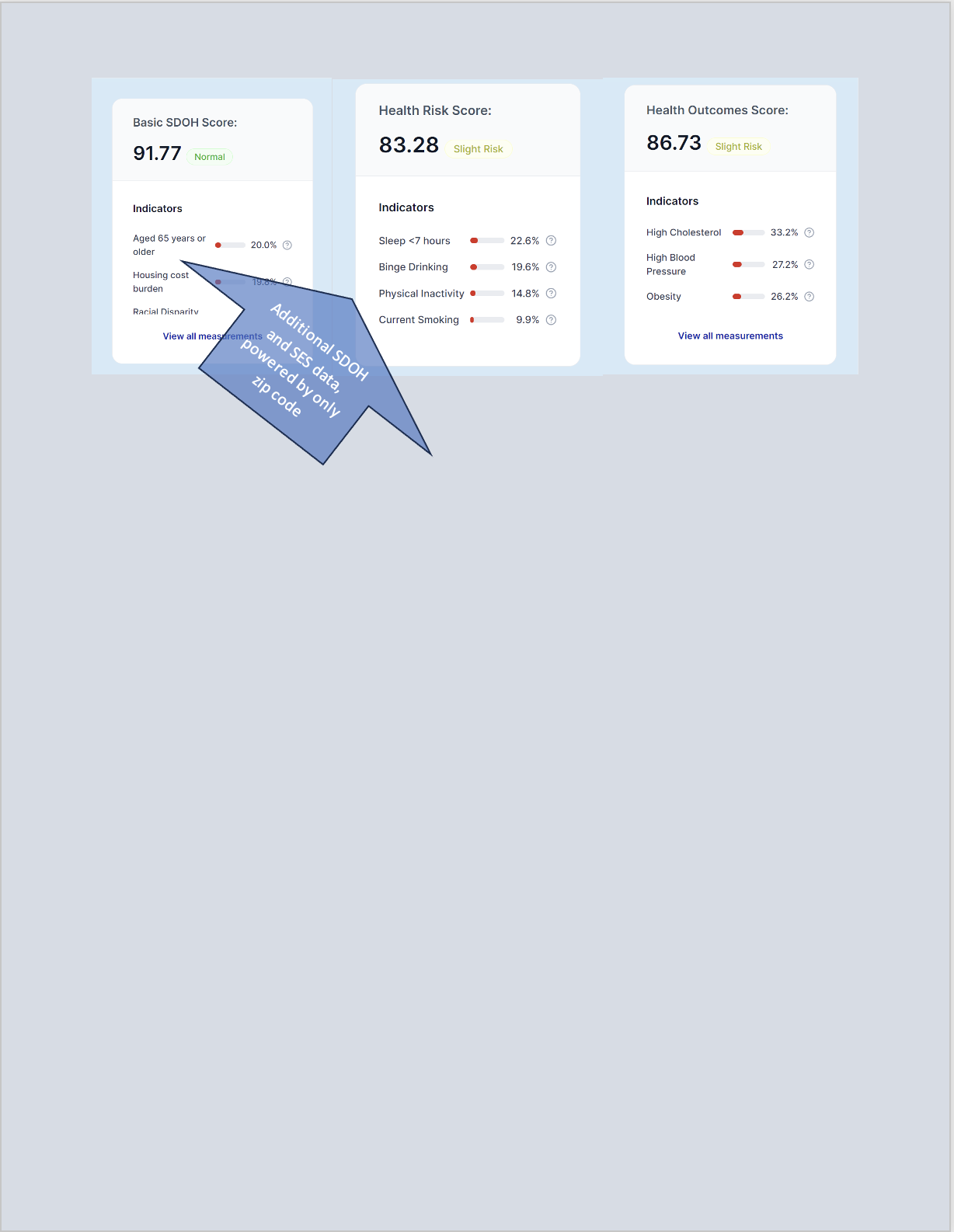Request Your VPAATH©️ SDOH Software Demo
Unmet Need for Social Determinants of Health (SDOH) Visibility
4 broad categories - Socioeconomic, Physical Environment, Behavior,
Healthcare access.In total they contribute 50% to a person's length and quality of
life.Personal behaviors contribute 30% to a person's length and quality
of life.Actual clinical care contributes only 20% to a person's length and
quality of life.Unmet social needs lead to an increase in disease risk.
SDOH forms the basis for measuring and scoring health equity
initiatives.
Value Proposition/ROI for SDOH usage by payers and providers
Patients with unmet social needs tend to be sicker, overuse the ER, and cost more to treat.
Health plans that use a targeted approach informed by predictive analytics have better compliance with increased engagement and retention rates as high as 50%, compared to the industry average of 10% to 20%.
Government mandates for measuring the impact of health equity efforts on treatment are increasing, along with incentives to improve healthcare access to underserved populations.
Introducing the Vista AI Analysis Tool for Health - VPAATH.
The healthcare community has long searched for an effective way to
blend all these disparate factors, especially SDOH, into one easy-to-use
individualized health metric.VPAATH is a pro-active predictive AI program that can identify a
high risk, high utilizing patient, down to the zip code by using AI analysis
for pinpointed SDOH as well as health risk factors to formulate an overall
individualized health equity score.VPAATH bases its analysis on the widely accepted SDOH holistic
model, which weighs an individual's health by percentage on SDOH factors
(50%), Health risk behaviors (30%), with the last 20% occurring in the
Healthcare venue, representing access to care.VPAATH IS HEALTH EQUITY. Properly used, it can provide quality
informational analytics on healthcare treatment protocols with improved
healthcare access for underserved populations.VPAATH is proactive versus current payer/provider cost containment
measures (sometimes adding SDOH) which are reactive by nature and may lead to actions that can have future impacts. Focusing on after-the-fact
excessive health cost utilization is the starting point, an approach that is often too little/too late to prevent long-term consequences.When widely distributed in the organization, VPAATH can help address
the more difficult task of pinpointing those members who currently do not use many health services but have a high likelihood of having a major medical event soon. Identifying these imminent super-users in time to intervene and change their health trajectory holds great promise for not only improving outcomes and quality of life but lowering costs.Proactive SDOH screening allows any stakeholder (provider, payer,
caseworker, etc.) on the continuum of care to proactively initiate and
engage in preventative interventions.Operations leadership at the payer can use proactive SDOH screening
to develop strategic campaigns targeting specific members, without waiting for negative claims data.Health care network Providers and Case Managers can use it to
quickly tailor plans of care and focused discharge planning.Together Providers and Payers can advocate for cost efficient early
medical and lifestyle interventions which can prevent or delay disease
progression to expensive late or end stages.
The VPAATH Advantage - SDOH Integration at the Point of Care
Zip code is the most important factor for SDOH determination.
VPAATH is a smart phone/tablet-based App that will reside at the fingertips of everyone in the chain of care. It is simple and convenient to use. Further it "democratizes" preventative and proactive SDOH screening for all concerned - Patient/Provider/Payer, a true Win/Win/Win result.
It will reside outside of the payer's and provider's databases and will not mingle with claims data or other personal health information. There should be no HIPPA or EDH integration issues. VPAATH is designed to be adjacent and complimentary.
Proactive SDOH screenings lead to Total Cost of Care savings.
VPAATH provides an auditable and objective compliance measurement for meeting CMS Health Equity regulations around payer efforts to improve care access for underserved populations.
VPAATH will qualify as QIA (Quality Improvement Activities) and therefore is part of the numerator in the MLR calculation. This means that VPAATH costs can be built into the rate base along with a 17.6% premium.



